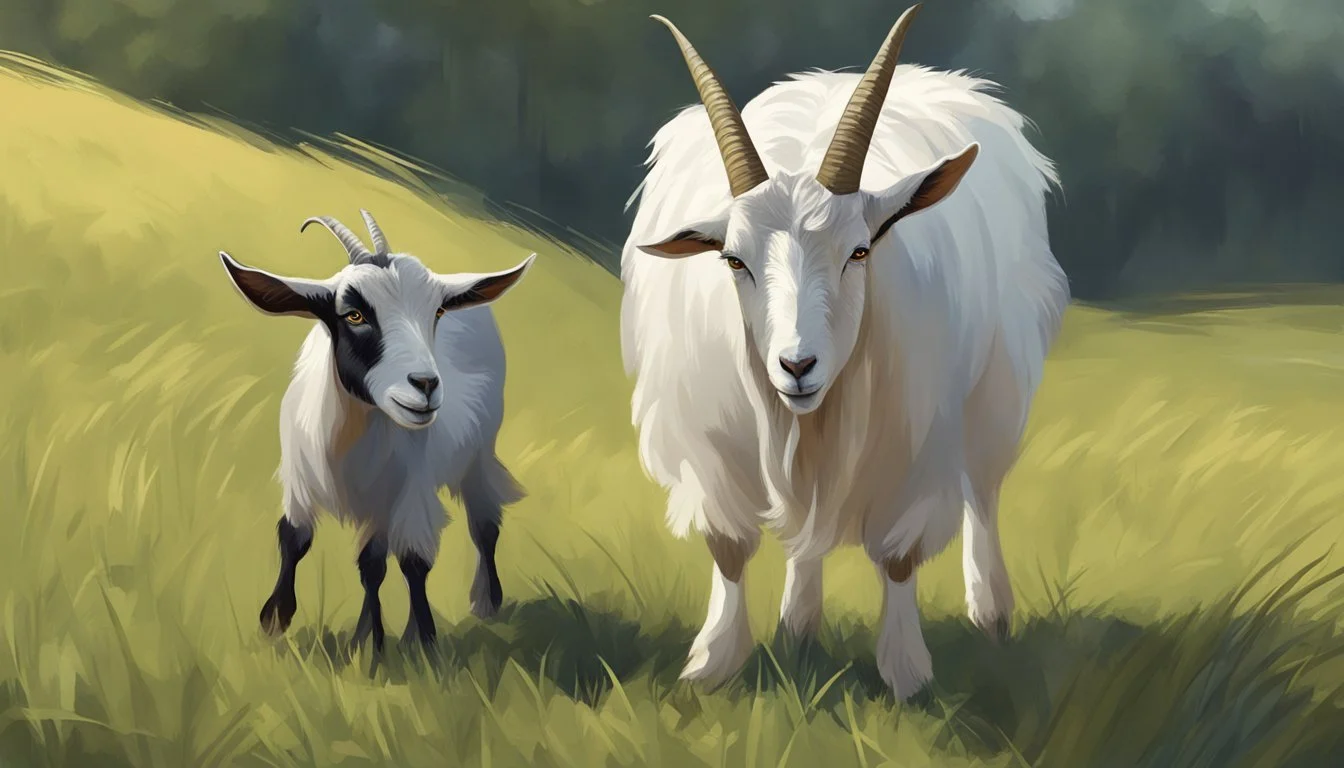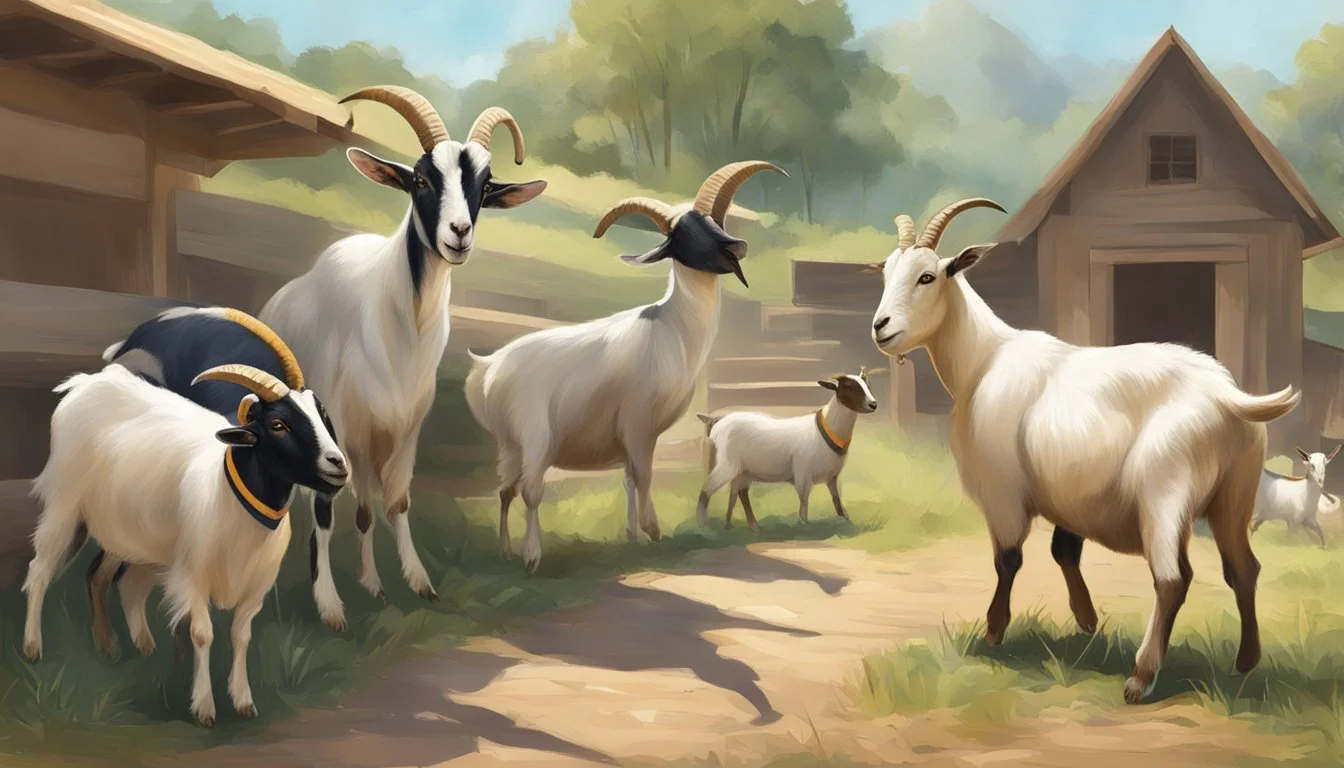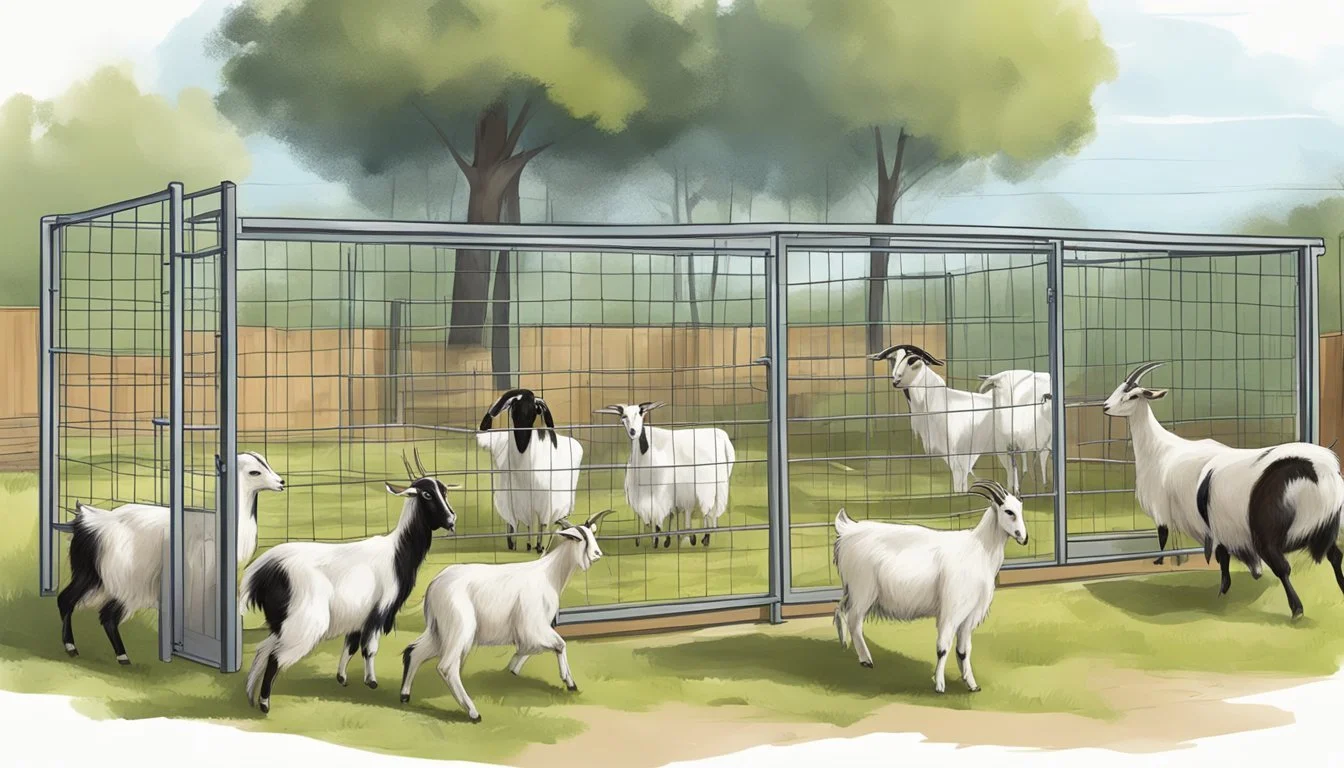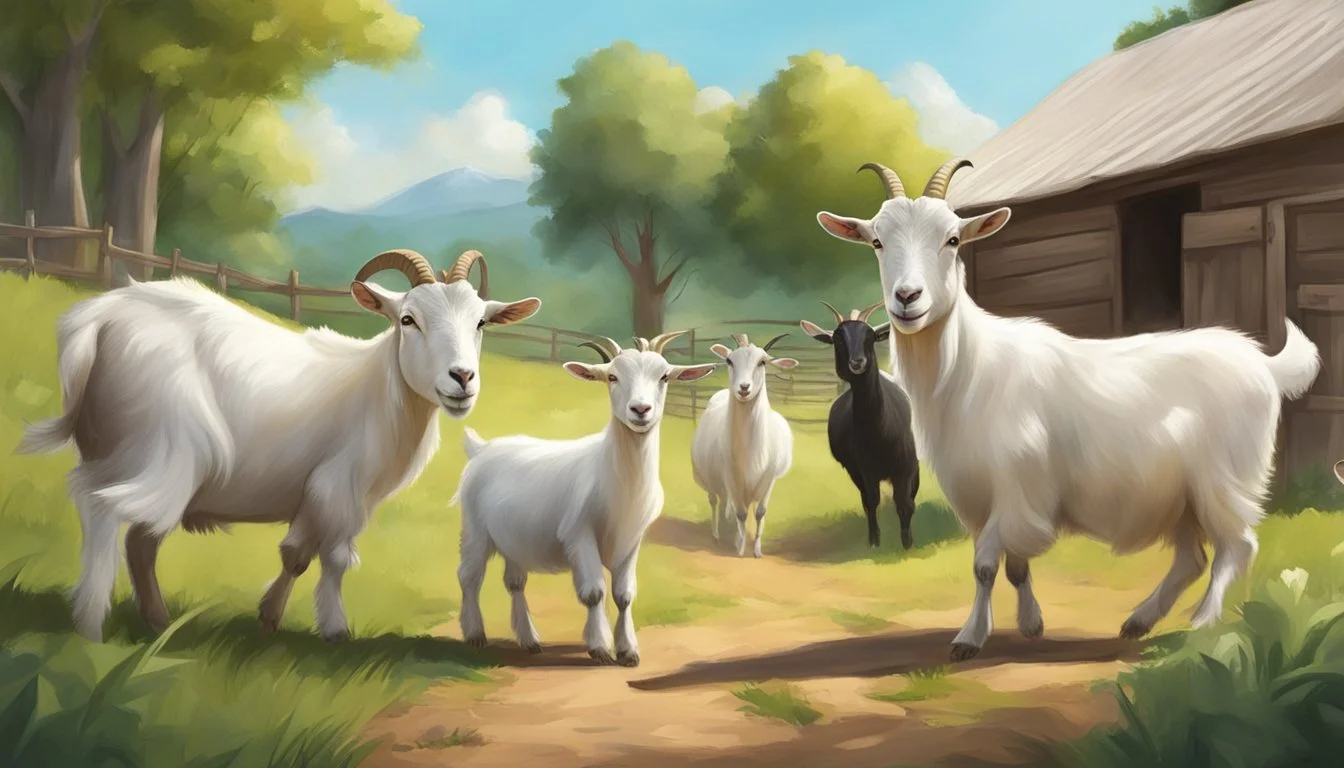Can Goats be Trained to Respond to Commands?
Understanding Caprine Behavior and Training Potential
Goats, often known for their playful and sometimes stubborn personality, are actually highly intelligent animals capable of learning a variety of behaviors and commands. Their ability to learn is comparable to that of dogs, making them not only entertaining farmyard companions but also trainable livestock. By employing patience and consistent positive reinforcement techniques, owners can effectively teach goats to respond to basic commands and even perform simple tricks.
Training goats involves understanding their social nature and utilizing their intelligence to foster a bond between the trainer and the animal. As herd animals, goats are naturally inclined to follow a leader and are adept at picking up cues and routines from their human handlers. When trainers leverage these traits with effective training methods, goats can learn to recognize their own names, follow commands, and navigate obstacle courses. The key to successful training lies in the consistent use of rewards and recognition, tapping into the goats' quick-witted and responsive characteristics.
Through training, goats can not only learn to adhere to farm routines but also participate in structured activities, such as shows or competitions. Their capacity for learning can be a valuable asset in managing a herd, improving animal welfare, and enhancing the relationship between goats and their caregivers. Therefore, training goats not only showcases their smarts but also enriches their lives through mental stimulation and social interaction.
Understanding Goat Behavior
Goats are highly social and intelligent creatures that exhibit a range of behaviors reflective of their nature and environment. Their capacity for learning and responding to training is intertwined with their social dynamics and how they communicate with each other and humans.
The Social Nature of Goats
Goats are inherently social animals that thrive within the dynamics of a herd. They form complex social structures and establish a clear hierarchy among themselves. This herd mentality influences their behavior and can be leveraged in training scenarios, as they naturally seek companionship and may follow a leader or peer. Effective communication during training can harness their social instincts, building trust and ensuring a positive experience.
Goats' Learning Capabilities
Possessing a curious and mischievous personality, goats are quite intelligent and capable of learning a variety of commands and tasks. They respond well to consistent guidance and positive reinforcement, forming habits that can persist over time. The success in training these animals often hinges on the patience and understanding of their communication cues, allowing trainers to tailor their approach to each goat's unique personality.
Stress and Fear in Training
Recognizing and respecting a goat's innate flight response is pivotal in avoiding stress and fear during training. Abrupt movements or loud noises can startle them, triggering this response. Approaching goats with patience and predictability fosters a safe environment conducive to learning. By acknowledging their nature, trainers can cultivate a sense of security, which is essential for goats to become receptive to learning new behaviors.
Essentials of Goat Training
Training goats effectively hinges on three fundamental principles: consistency in training sessions, fostering a strong bond of trust, and employing positive reinforcement techniques. Mastering these elements ensures a better training experience for both the goat and the trainer.
Importance of Consistency
Consistency is the bedrock of effective goat training. Establishing a routine helps goats understand what is expected of them, reinforcing their learning process. Regular, repetitive training sessions create a familiar structure, aiding goats in grasping and retaining new commands.
Building Trust with Your Goat
Building trust between a trainer and their goats is critical for successful training. Trust is cultivated through gentle handling, spending time together, and always ensuring the goats feel safe and comfortable. A trusting goat is more receptive to learning, and a strong bond can transform training sessions into enjoyable experiences for the animal.
Positive Reinforcement Techniques
Positive reinforcement is a powerful method in goat training. It involves rewarding desired behaviors with treats, praise, or a click from a clicker, encouraging the goat to repeat these behaviors. This technique not only accelerates learning but also strengthens the bond with the goat. It's essential to deliver rewards promptly to establish a clear association between the correct action and the reward.
Basic Goat Training Commands
Goats can learn a variety of commands through consistent training. Implementing basic commands and reinforcing good habits are fundamental for a successful goat training program.
Teaching Simple Commands
Goats are intelligent creatures capable of understanding and executing basic commands similar to dogs. The key to training lies in repetition and positive reinforcement. To teach a goat to come when called, one should start with short distances, using a calm and assertive tone, and reward the goat with treats or affection to reinforce success. For instance, using the same word or phrase, like "come," each time you want the goat to approach will solidify the command through consistency.
Commands should be straightforward, often consisting of a single word such as "come," "stand," or "stay." One could use a clicker paired with a food reward to mark the behavior you want, further clarifying the goal of the training session.
Instilling Good Habits
Beyond responding to verbal cues, goats also need to develop good habits that contribute to their well-being and ease of handling. This includes comfortable interactions with humans, and habits like calmly accepting bedding changes with clean straw. Training them to be cooperative during routine maintenance, such as hoof trimming, starts with getting them used to being touched and handled.
Regularly engaging with the goat in a positive way helps in building trust and reinforcing these habits. It’s important to ensure that the goat’s living environment always has clean straw for bedding, providing a clean and inviting space that encourages good health and hygiene habits.
Advanced Training and Activities
Advanced training for goats encompasses a variety of complex behaviors and tasks that go beyond basic obedience. Through the consistent use of positive reinforcement and clicker training, goats can learn intricate tricks and even engage in activities that facilitate bonding with humans.
Complex Tricks and Tasks
Training goats to perform complex tricks and tasks requires patience, consistency, and appropriate rewards. One effective method is clicker training, which utilizes a click sound to mark the desired behavior, followed swiftly by a treat. Over time, goats can learn to perform a variety of entertaining tricks such as fetching items, weaving through poles, or responding to specific commands.
Creating an obstacle course offers both entertainment and a physical challenge for goats. Owners should introduce obstacles gradually, ensuring each one is safe and secure. As goats become more proficient, the courses can become more complex, incorporating jumps, ramps, and balance beams.
Goat Yoga and Other Human-Interactions
Goat Yoga provides a unique form of entertainment and bonding, combining yoga practices with gentle interaction with goats. Goats are trained to climb and balance on participants' backs, promoting a playful and interactive experience. This activity not only enriches the lives of the goats by providing mental stimulation but also enhances human-animal bonding.
In addition to goat yoga, goats can partake in shows and activities designed for public entertainment. With the right patience and training, goats can showcase their abilities at fairs and exhibitions, demonstrating their skills in a variety of events tailored to their agility and intelligence.
Feeding and Care Impact on Training
A goat's receptiveness to training is highly influenced by its diet and living conditions, underscoring the importance of proper feeding and care.
Dietary Influence on Behavior
The diet of a goat plays a pivotal role in its behavior and its ability to learn. A balance of hay, pellets, and pasture provides the necessary nutrition that can affect a goat's energy levels and concentration. For example, a diet deficient in minerals can lead to a lack of focus, while an appropriate intake of nutrients helps maintain an animal's alertness and responsiveness to commands during training sessions.
Housing and Space Requirements
Goats require a safe and comfortable enclosure, such as a barn or shelter, with clean straw or wood chips to rest upon. The space accessible to the goat also affects its ability to learn; ample space in their enclosure encourages physical activity and mental stimulation, which can facilitate better training outcomes. They must also have access to fresh water and shelter that protects them from extreme seasons, ensuring their well-being and capacity for training.
Health Considerations for Training
The health of a goat is another critical factor in its trainability. Regular hoof care to avoid discomfort or infection and monitoring for parasites are essential for keeping goats attentive and responsive. Diets rich in absorbent materials like wood ash can also prevent issues that may distract or discomfort the animal. Additionally, individual breed characteristics may influence a goat's training capacity and should be taken into account when designing a training regimen.
Handling Training Challenges
Training goats to respond to commands can present unique challenges, such as managing their natural tendencies toward stubbornness and ensuring cleanliness. By understanding these difficulties, trainers can approach goat training with more effective strategies.
Dealing with Stubbornness and Distractions
Goats have a strong personality and may exhibit stubborn behavior when training, which requires patience from the trainer. To counteract stubbornness and distractions, establish a clear routine and use consistent commands. Positive reinforcement, like treats or praise, encourages cooperation. Remember that goats are intelligent and may try to test limits, so one must remain firm and consistent.
Potty Training and Cleanliness
Potty training a goat is not unlike training a cat or dog. Introduce a litter box and bring the goat to it at specific times, such as after meals, to establish a habit. If an accident occurs, it's important not to scold harshly but instead guide the goat back to the correct place. Goats can learn to urinate and defecate in designated areas over time, reducing stress and keeping their environment clean.
Transporting and Travel Training
Transporting goats can induce fear and stress, so it is crucial to build trust during travel training gradually. Introduce the goat to the transport vehicle in a calm manner and spend time with them inside it while stationary. Start with short trips to acclimate them to the movement and sounds. Train consistently to help avoid accidents and to keep the goat at ease during travel.
Integrating Goats into Household and Farm
Integrating goats into households and farms involves developing a strong bond with the animals and understanding their potential as both pets and productive farm animals.
Goats as Pets and Companions
Goats have a surprising capacity for bonding with humans, making them suitable as pets. A goat owner can foster this bond through consistent interaction, which may include training to respond to commands. Animals that are well-socialized from an early age can become especially affectionate towards children and adults alike. These social creatures often enjoy the company and can provide benefits to families looking for a unique and engaging pet.
Goats in Homestead and Agricultural Roles
On homesteads, goats fill important roles, contributing to milk and fiber production – essentials in many agricultural settings. Goats are smart and can adapt to various farm tasks. When integrating goats for agricultural purposes, proper training ensures progress with their responsibilities. Additionally, these animals aid in weed control and can enhance soil fertility through their grazing habits. Their versatility on a homestead is one of the primary benefits they offer to those looking to achieve a self-sustaining lifestyle.
Conclusion
Goat training is both achievable and rewarding. Evidence suggests that with proper guidance and consistent reinforcement, these intelligent animals can learn a variety of commands. Training should involve a system of rewards to reinforce positive behavior and encourage a goat's cooperation and learning.
The key to successful training lies in consistency. Handlers must deliver clear commands and corresponding rewards at the right time to ensure that goats make the desired association. Regular practice enhances a goat’s ability to follow directions and helps solidify the behavior as a part of their routine.
Training goes beyond simple commands: it strengthens the bond between goats and their owners. Goats can perform complex tasks, navigate obstacle courses, and even participate in shows, indicating their high capacity for learning and adaptation.
In conclusion, while goats may not typically be seen as traditional pets like dogs, they are quite capable when it comes to training. It takes patience and dedication, but the outcome is a responsive and engaged animal. Successful goat training hinges on the use of consistent commands, rewards, and a commitment to regular practice. Those who invest in these methods are likely to see commendable results in their goat's behavior and abilities.







